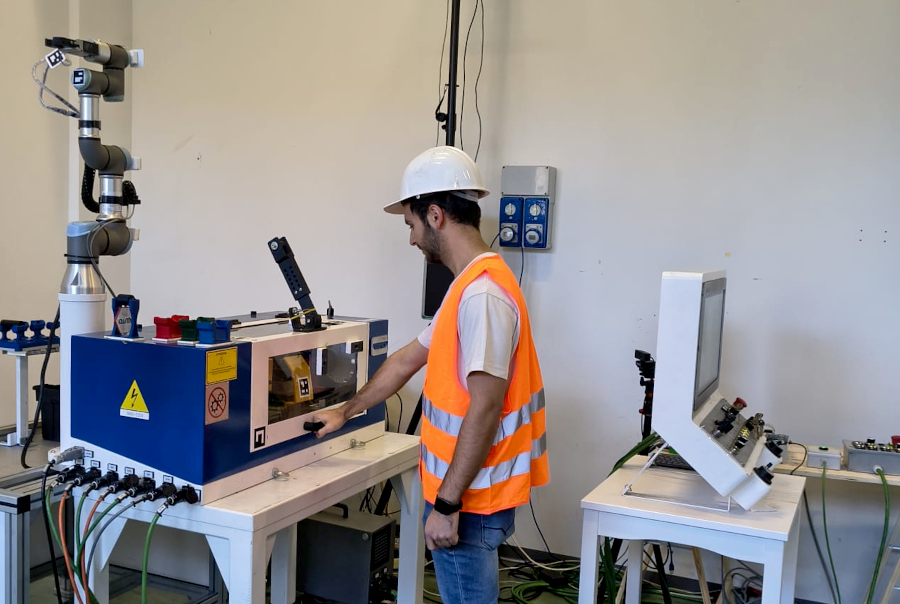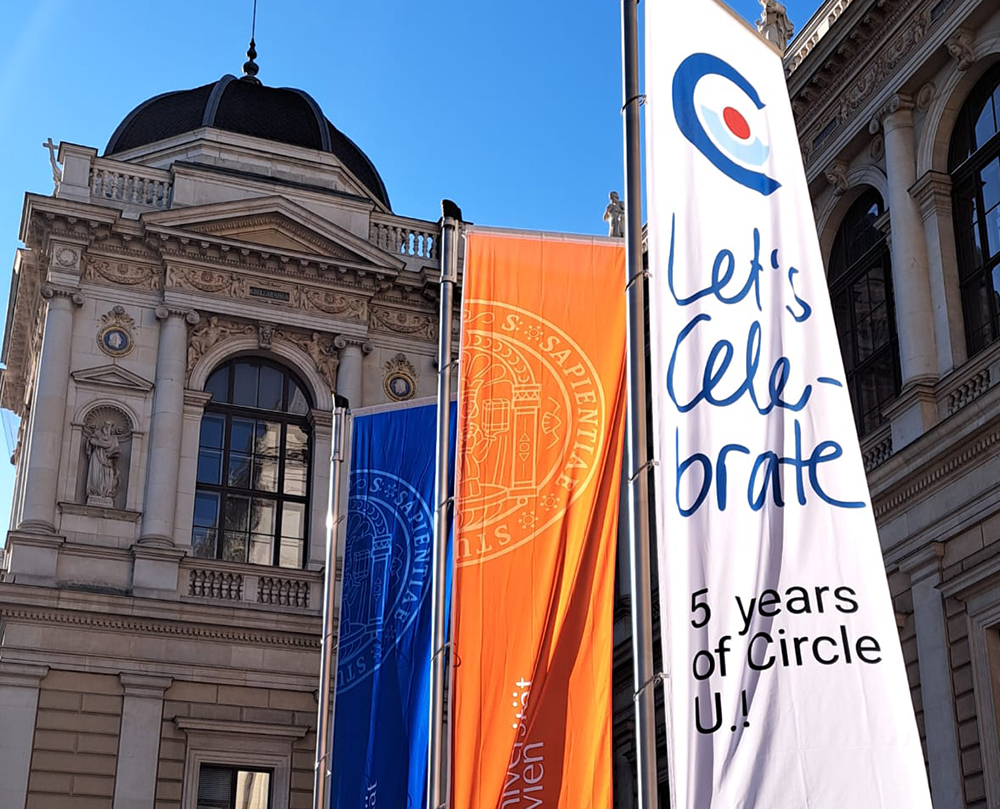 This April 25th marks the 80th anniversary of Italy’s liberation from fascist and Nazi rule, specifically of the general insurrection proclaimed by the National Liberation Committee for Northern Italy. Yet this date represents the culmination of a more complex process, whose crucial turning point lies in the previous January 27th: the day Soviet troops liberated the Auschwitz extermination camp. Between April 25 and September 2, 1945—the official end of World War II, marked by Japan’s surrender—appear the first memorials written or inspired by Italian survivors of the Nazi concentration camps.
This April 25th marks the 80th anniversary of Italy’s liberation from fascist and Nazi rule, specifically of the general insurrection proclaimed by the National Liberation Committee for Northern Italy. Yet this date represents the culmination of a more complex process, whose crucial turning point lies in the previous January 27th: the day Soviet troops liberated the Auschwitz extermination camp. Between April 25 and September 2, 1945—the official end of World War II, marked by Japan’s surrender—appear the first memorials written or inspired by Italian survivors of the Nazi concentration camps.
The most famous of these, If This Is a Man, is dated, as Primo Levi himself writes, “Avigliana–Turin, December 1945 – January 1947.” However, Levi, together with fellow Jewish survivor from Turin, Leonardo De Benedetti, had already drafted a Report on the Sanitary and Medical Organization of the Monowitz Concentration Camp for Jews between March and June 1945, while in the Katowice transit camp and “at the request of the Russian Camp Command.” The report was handed over to the Soviet authorities—we do not know in what language—and was later published by the authors on November 24, 1946, in the journal Minerva Medica (vol. 37, no. 47, pp. 355–544).
The text presented at the April 23, 2025 event—organized by CISE at the Department of Philology, Linguistics and Literature at the University of Pisa—appears to be the first published memorial by an Italian survivor of the Nazi camps. It was written under circumstances partly similar to those of the Levi–De Benedetti Report. Dated May 15, 1945, the memorial was written by Silvio Guarnieri based on the testimony of Luigi Rozzi, a survivor of both Mauthausen and Auschwitz-Monowitz. Like Primo Levi, Rozzi survived because he had been left behind in the camp when the prisoners were forced on a death march—an injury to his leg had left him unable to walk. But Rozzi was more fortunate than Levi, who would return to Turin only on October 19, 1945 and, as he writes in The Truce, was still in Romania in September (“On the night of September 23 we saw the oil fields of Ploesti burst into flames”).In contrast, by May 1945 Rozzi had already crossed the threshold of the Italian Cultural Institute in Timişoara, then directed by Guarnieri, which had become a center for assisting Italian survivors of the camps and returning prisoners.
Rozzi was fed, clothed, and began to tell his story. The setting—a diplomatic Italian institution with access to official sources and the press—allowed his memories to be confirmed and supplemented. The memorial, written in those days and dated May 15, 1945, was immediately published in Romanian under the title Numarul 202.133 (“The Number 202.133 Speaks”) in the weekly Lupta patriotică on June 4, 1945. The survivor, whose number was tattooed on his arm, then resumed his journey with the Italian version of the memorial in his pocket, returned to Italy in June, and succeeded in publishing it in August 1945 under the title Extermination Camps in Nazi Germany, at the Ebranati Press in Salò, where some of his relatives lived.
The near-simultaneous publication of the memorial in both Romanian and Italian makes it a case of remarkable interest. This is why the April 23 event features scholars of both Italian Studies (Marina Riccucci, Giancarlo Bertoncini, and the author of this piece) and Romanian language and culture (Bruno Mazzoni, Doina Condrea Derer, Emilia David, and Edoardo Giorgi).
The event also holds special significance for the University of Pisa. Silvio Guarnieri, originally from Feltre, graduated in both Law and Literature in Florence, where he developed close ties with Solaria magazine editor Alessandro Bonsanti and frequented the literary café Giubbe Rosse alongside Montale, Gadda, Ferrata, Loria, Vittorini, and others. He left Italy in 1938, fleeing fascist repression after being appointed Director of the Italian Cultural Institute in Romania. After returning to Italy and working as a high school teacher and principal in Feltre, he was invited in 1960—on the recommendation of Luigi Russo—to teach Modern and Contemporary Italian Literature at the Faculty of Humanities in Pisa. In 1963, he also became a professor of Romanian Language and Literature, initially at the Faculty of Economics and later at the Faculty of Foreign Languages and Literatures. He also served as principal of the Technical Commercial Institute of Pontedera and as a city councilor in Pisa from 1966 to 1975.
But the University of Pisa also figures, indirectly, in Luigi Rozzi’s story. A native of the Brescia region, Rozzi had graduated in Engineering from the Politecnico di Milano. When he was arrested by the SS on October 28, 1943—betrayed by a fascist informant—he was working at Magneti Marelli in Sesto San Giovanni. He was part of an anti-fascist resistance network that supported partisan activity using radio transmitters. The network included, or may have been led by, Carlo Mendel, who was also arrested that same day and, as Rozzi’s memorial recounts, was executed at the Milan Arena in December 1943 with other comrades, “in retaliation for the killing of the Fascist leader of Milan, Aldo Resega.” Mendel had been admitted to the Scuola Normale in 1932 and, on November 23, 1937—shortly before the racial laws would target him as a researcher—graduated in Physics at the University of Pisa under the supervision of Luigi Puccianti, the same professor who had mentored Enrico Fermi.
This is not the place for a thorough analysis of the Guarnieri–Rozzi memorial, but its cold and factual tone stands out—especially in its depiction of the technical and destructive “organized cruelty” of the camp system. The text, The Number 202.133 Speaks, is not so much a narrative as it is a demonstration that “Engineer Luigi Rozzi no longer existed”: he had become simply “a number […] sewn into his jacket […] tattooed on his arm.”
The volume Chronicles of War and Peace, edited by Adriana Guarnieri and Giacomo Corazzol and published by Manni in 2022, includes the story The Number 202.133, which, with many variations, echoes the 1945 memorial and goes on to recount how Guarnieri and Rozzi met again after the war, in Milan, Feltre, and Pisa. Disillusioned with postwar social and political developments and still shaped by the Darwinian logic of the camps—where “he had to swiftly mount his defenses […] and try to preserve what little he had or could obtain”—Rozzi came to feel increasingly alienated even from those he had once been closest to. “In this way,” Guarnieri writes, “without realizing it, he ended up condemning himself, condemning his own past experience.” Yet from these pages emerge, albeit shrouded in the discretion that leads even to the omission of proper names, Rozzi’s personal story—and especially the presence of two women: the partner he lived with at the time of his arrest (whom he married after the war), and the woman he would marry after the first wife’s death.
We are thus presented with an exceptionally early testimony of the extermination camp system in Nazi Germany, and at the same time with a complex, deeply human story, told without rhetorical glorification. The participation in the April 23 event of Adriana Guarnieri, daughter of Silvio, and Chiara Rozzi, daughter of the Auschwitz survivor known as Number 202.133 (with a contribution by Sergio Ebranati, grandson of the first Italian printer of the memorial), is the most fitting way to honor and preserve these precious memories—eighty years after they were first written.




